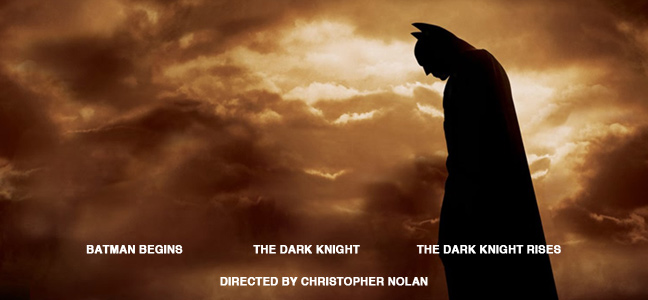
“Hey man, you seen The Dark Knight Rises yet?”
“Nah,” I replied, “I haven’t seen it. Been hearing good things about it, though.”
“You gotta see it. We should go this weekend.”
“Actually, I haven’t even seen The Dark Knight yet…”
“You haven’t seen The Dark Knight?” Incredulity.
“Nah,” I’d say. “Haven’t seen it.
The whole conversation sounded like a broken record.
In the circles I run in, the cross-over between geek and pop culture runs strong. Between the guys I work with, my one brother who lives with a comic book-obsessed illustrator, and my other brother who works in the film industry, the cultural and social impact of a film like The Dark Knight Rises is akin to a tempest. It is on the tongues and in the conversations of nearly everyone I associate with on a daily basis. It’s impossible to ignore, let alone hide from.
So, then, with a long weekend alone with my wife out of the house, I chose to join the crowd, to give into the rising, whirling winds. One a day, I watched the Batman Trilogy, immersing myself in Nolan’s envisioning of one of literature’s most tragic heroes.
[He’s] little more than a rich man with a lot of toys.
I’ve long been a fan of Batman, first inspired by reading through my mom’s old comics from the late sixties and early seventies. Hell, I was even in love with the old Adam West Batman, wall-climbing, homoeroticism, paunch and all. Growing up, however, I rarely considered him to be my favourite superhero, usually citing Spiderman (who I could, you know, relate to, because I thought of myself as a bit of a nerd), or, oddly, Aquaman, and, if we really want to stretch it outside of Golden Age American superheroes, Astro Boy. I liked Batman, but was never impressed with the idea that he was little more than a rich man with a lot of toys.
An adult now, I see how I misinterpreted Batman’s strength and the true source of his ‘super’ powers. Like Astro Boy, Batman’s origins lie in tragedy, in trying to recover what was lost by refusing to let it drift away into memory. In vengeance. In anger. Sure, he has gadgets, and his near limitless pool of money gives him the ability to become a superhero, but its his inner emotional turmoil and utter belief in justice that gives him the power to accomplish amazing things.
There’s no macguffin in this story — no radioactive spider; no alien DNA — just a limitless desire to rid the world of evil and maliciousness. And though I’m not a vengeful person, I now understand Bruce Wayne and his alter ego, and of all the superheroes, he’s one of the few that I can truly believe in.
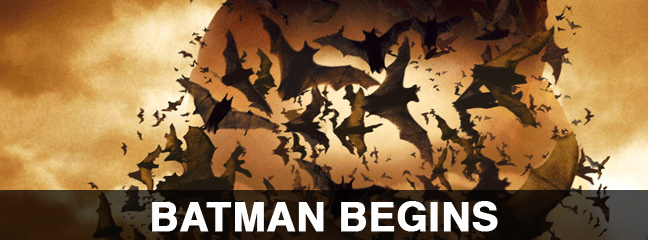
The origin story has always been an integral part of any superhero, exposing the core of their beliefs, ideals and, in some cases, the beginnings of their brush with the poisonous lure of power.
Many superheroes can get by with readers by riding on the backs of easy recognizable and rote ideals: defeating evil, saving lives, embracing fate. Superman’s origin as an alien is important to his powers on a metaphysical level, but being an alien doesn’t define his ideals or propel his character development, it simply gives him the power to do good; the rest is up to him. Spider-Man follows a similar origin story to Batman, looking to stomp crime out of New York City, to prevent others from feeling the pain he felt at losing his uncle to a petty robbery gone bad, but ultimately its about Peter Parker finding the authority and respect as Spider-Man that he could never have in his everyday persona.
Batman Begins explores the origins of Batman, the angry fires of vengeance and the idealism of demolishing crime first born as he watches his parents gunned down by a petty thief, not dissimilar to Spider-Man. But though these early circumstances are similar for the two superheroes, Peter Parker continues to be inspired by that original idealism, and Bruce Wayne spends years spiralling through a pit of anger, fuelled by his feelings of uselessness and despair as he recognizes the humanity’s darkness.
Beyond the incredibly physicality required for the role, Christian Bale spins on a dime between the easy smile of Bruce Wayne the Playboy Billionaire, the agony and frustration of Bruce Wayne the Wandering Soul, and Batman, the Dark Knight, and brings charisma and raw emotion to the dual-personalities.
[A] man’s descent into darkness and his attempts to rise upwards and create light in a city that was teetering on the edge of destruction.
There’s a distinct separation between Bruce Wayne and Batman, however, and it goes well beyond the simple costume change. Donning the suit, and assuming a different (and mildly ludicrous) voice, Bale creates two facets to both the characters of Bruce Wayne and Batman, and the films themselves. On originally seeing Batman Begins, I was disappointed, though I wouldn’t admit it to myself at the time. The fault wasn’t so much with the film, I realize now, but with my expectations. I was looking for an action flick, for Batman to beat up some bad guys and use his cool tools. I was looking for a James Bond movie. Similar to the Val Kilmer films, which I’d rather now forget. Instead, I found a smart, character-driven narrative tale about a man’s descent into darkness and his attempts to rise upwards and create light in a city that was teetering on the edge of destruction. Watching Batman Begins a second time around, seven years later, I realized what Nolan was doing with the film, where its true strengths lay. I was also surprised to find that the action sequences, that originally drew me to the movie, were by far its weakest link, easily overshadowed by Bruce Wayne, his relationships and his struggles.
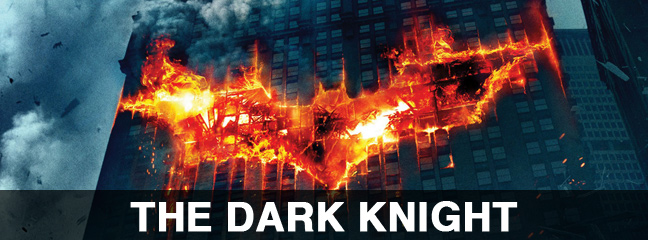
In many ways, the continuation of those relationships and struggles are against at the heart of The Dark Knight, but the rogues gallery that really steals the show in The Dark Knight.
 On Wayne, as I touched on earlier, I’ve always preferred Christian Bale in the role as the troubled playboy, rather than Batman. His Bruce Wayne is troubled, believable and encourages empathy in the viewer despite his sometimes questionable character. Bale defines Bruce Wayne as surely as any of the series’ greatest writers. His Batman, however, feels like a cartoon character, a campy film version of a menacing crime fighter. I blame this as much on Nolan’s direction as I do Batman, but when Bale spends a significantly larger portion of The Dark Knight as Batman, where the other two films are focussed more around the nuances in Bruce Wayne, I found myself slightly less connected and would rank it as my least favourite of the three films, despite its popularity and obvious strengths.
On Wayne, as I touched on earlier, I’ve always preferred Christian Bale in the role as the troubled playboy, rather than Batman. His Bruce Wayne is troubled, believable and encourages empathy in the viewer despite his sometimes questionable character. Bale defines Bruce Wayne as surely as any of the series’ greatest writers. His Batman, however, feels like a cartoon character, a campy film version of a menacing crime fighter. I blame this as much on Nolan’s direction as I do Batman, but when Bale spends a significantly larger portion of The Dark Knight as Batman, where the other two films are focussed more around the nuances in Bruce Wayne, I found myself slightly less connected and would rank it as my least favourite of the three films, despite its popularity and obvious strengths.
Two of those strengths are Harvey Dent, who I’ll touch on in a moment, and The Joker, played by the late Heath Ledger, who steals every scene he appears in, embodying everything that defines Batman’s great external villains. Ledger delivers a performance that, in an opinion shared by many, is the Joker’s definitive representation, in any media. I’ve seen Ledger in many roles, from small films like Candy, to teenage romantic comedies like 10 Things I Hate About You, and I’ve always been impressed by his versatility. I wasn’t prepared to see him in the role of The Joker. Or, rather, I wasn’t prepared for how little I would see of the Ledger I was familiar with in The Joker. From his first entrance, I didn’t see the actor behind the mask, it was The Joker on screen, no questions asked. At one time, I was wondering about what The Joker would look like underneath his mask, before the his face was disfigured. I thought about it for a while, coming to my own conclusions, before realizing that I knew exactly what “The Joker” would look like without his face paint and scars. He’d look a lot like Heath Ledger. It was something of an epiphany for me, and really formed my opinion of Ledger’s role.
One little niggle, and the only complaint I can find after digging deep, is that the Joker makes a few mistakes in the film, goofs up here and there, which goes against my perception of him and his obsessive compulsive need to always been in control of the chaos that he creates. There’s a moment in the film when he presses the detonator on a building wired with explosives. But it doesn’t blow up, not fully, and is only riddled with a few minor explosions. The Joker pauses, looks back at the building, puzzled, and shakes his detonator. Kablooey. The building blows. It’s a little bit of humour, which isn’t unusual in Nolan’s adaptation of Batman, but also shows something of a lack of control over the situation. It was a mistake, if even a small one. And The Joker doesn’t make mistakes. Still, in a bubble, moments like these help define Ledger’s legendary take on The Joker, and I’ll forgive him nearly anything for the rest of the role.
For a moment, I’d like to discuss the title of the film, which on the surface appears to be referring to Batman, who has often assumed the mantel of “The Dark Knight” in the years since his creation. I think, however, it’s also interesting to explore the film’s title in relation to Harvey Dent, played by Aaron Eckhart, and his transformation into Two-Face, a white knight fallen to the chaos that threatens to engulf the city he was so close to saving. Dent is referred to many times as Gotham’s ‘White Knight,’ in contrast to the city’s opinion of Batman’s ‘thuggish’ behaviour and tactics, but he has a shadow over his heart that is just as dark as the one that haunts Wayne, and it’s difficult not to question his motives and beliefs in the film’s second half. Nolan plays on the duality between these two characters, using them against each other in a way that reveals their strengths and weaknesses to the viewer. It’s a wonderful thing to see, and, even now, it’s hard for me to decide whether Dent is one of the films heroes, villains, or something of both. That’s good story telling. Period.
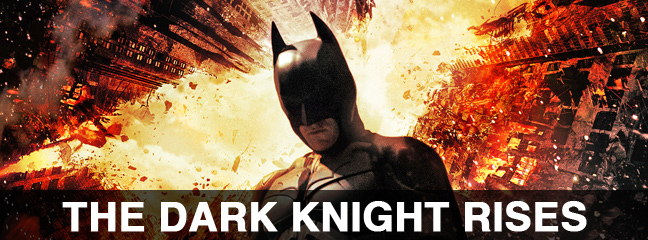
Where The Dark Knight was defined by its villains, The Dark Knight Rises finds strength in its heroes. From Lucius Fox, to Alfred Pennyworth, Jim Gordon and Selina Kyle, The Dark Knight Rises is full of secondary characters that buoy Bruce Wayne and Batman, and provide the foundations for his fight to save Gotham City. While there’s no character who stands head-and-shoulders above the others like The Joker did in The Dark Knight, The Dark Knight Rises has the strongest ensemble cast of the trilogy, assembling wonderful actors to play intricate, well developed characters, each acting according to a belief system that Nolan has meticulously crafted over the course of the previous two films. Mainstays like Fox, Gordon and Alfred are joined my newcomers Miranda Tate, John Blake and Selina Kyle, each of who fit comfortably in the Batman mythos.
On the criminal side, Bane can’t hold a candle to The Joker, despite an impressive and intimidating performance by Tom Hardy, but he does a serviceable job at propelling the plot forward and being catalyst to Bruce Wayne re-assuming the role of Batman, cast aside at the end of the previous film.
Batman is no hero; he is all of Wayne’s self-indulgence, anger and desperation brought to life.
Again, Nolan does an impressive job of crafting a narrative that features a strong, conflicted protagonist who doesn’t fill the ‘hero’ role as traditionally expected of him, but does ‘heroic’ things. Bruce Wayne becomes Batman out of a sense of false sacrifice, giving himself to the spirit of the Dark Knight in an effort to make life better for the citizens of Gotham City, but, in reality, it’s a mask he can hide behind as he battles the demons that were planted in him the night his parents were shot. Batman is no hero; he is all of Wayne’s self-indulgence, anger and desperation brought to life.
In stark contrast to Wayne’s narcissism, is John Blake, played by Joseph Gordon-Levitt, a young Gotham City beat cop who possesses an instinctive selflessness that realizes the ideals that first prompted Bruce Wayne to become the Dark Knight, but which was long ago lost to his anger and aggression. Gordon-Levitt brings his trademark charm to Blake and when put beside Bale’s likeable-but-smarmy Bruce Wayne, represents the one hero in the trilogy of films that the audience can cheer for without hesitation.
Originally, I wasn’t thrilled with the casting of Anne Hathaway in this role, though I’m generally a fan of her as an actor. Aesthetically, in embracing her black cat visage, I tend to picture Selina Kyle as an African American woman, likely inspired by the version of her featured in Frank Miller’s Batman: Year One and Eartha Kitt’s role in the final season of the original Batman television series. But, as far as I know, Catwoman has no canon ethnicity, and there are no socio-economic reasons that she can’t be of any ethnicity, so the complaint is a minor one and, within a few minutes of meeting her, I was impressed by Hathaway’s charisma and her physicality brought a suitable sense of demure power and confidence that defines Selina Kyle and Catwoman. On another, note, however, I prefer Kyle’s story to be tied to the Batman origin story, Batman Begins, in this case, as the parallels in their motives and methods are an interesting contrast. A minor complaint, however, since Nolan was still able to focus on the equally parallel and conflicting philosophies and methods of the two in The Dark Knight Rises. I’m not always a Catwoman fan, but the film was made stronger from her presence.
Beyond Wayne, the character that perhaps best defines Batman, more than any of the villains or side characters, except, perhaps, The Joker, isn’t a character in the traditional sense, but the city of Gotham itself. If Batman is a symbol for constraint and justice, Gotham is, and always will be, a symbol for the darkest parts of human society; a battleground not for good and evil, but for order and chaos. Without Gotham City, there would be no Batman.
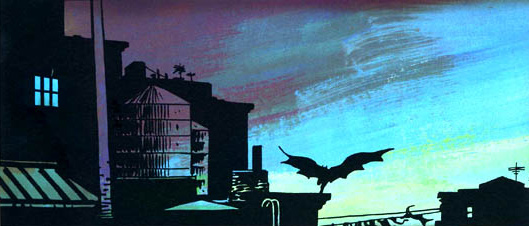
Visually, Batman Begins strove to take Chicago, where the film was shot, and turn it into a city that shared recognizable aspects with real cities, but was a beast of its own. The Gotham City in Batman Begins has a distinct visual identity that I love. The Dark Knight loses some of this, creating a city that feels slightly more generic, and The Dark Knight Rises, shot in large parts in New York City, throws the idea of Gotham City straight out the window. My biggest disappointment with The Dark Knight Rises is that the move to New York City loses the incredible mise en scene established in Batman Begins.
New York City is a wondrous city, more alive and rewarding a location for filming a movie than almost any other city on Earth (though, Paris and Tokyo would like to have at least a sniff at the conversation), but it is very much New York City and I was constantly ripped out of the experience by obvious shots of lower Manhattan, complete with all of its bridges, or Central Park. They are scenic and appropriately grand, given the high stakes that drive the narrative tension in the film’s second half, but New York City has such a distinct gravitas that I couldn’t help feel that I was watching a film about it, rather than it’s fictionalized counterpart, Gotham City. It seems odd to criticize a film for being so blatantly filmed in the city that served as inspiration for its source material, but it was a feeling I had trouble shaking. In contrast to my complaints, William Safire, journalist for the New York Times, once described Gotham City as “New York below 14th Street, from SoHo to Greenwhich Village, the Bowery, Little Italy, Chinatown, and the sinister areas around the base of the Manhattan and Brooklyn Bridges.” It’s a persona for Gotham City that the trilogy grew into over the course of the three films, the vision and scope of the city expanding and growing in parallel to the stakes faced by both Wayne and Batman.
In the end, though, you can leave the glass-walled skyscrapers of Manhattan to Spiderman and Superman; I prefer my Batman in a setting that’s tight and dark, grimy, malevolent and, if you’ll pardon the pun, gothic. Batman Begins hits closer to this mark than the subsequent films. But, then, maybe I’m keeping Mazzucchelli’s Year One vision of Gotham too close to my chest. Regardless of these matters of taste, all three films are visual spectacles and deserve a viewing, if not in a theatre, at least in HD, with gunfire blaring.
Nolan explores the duality of chaos and order, and the blurry line that separates them.
There’s much to love about Nolan’s adaptation of the Batman Series. Thematically, the films dig deep into the psyche and personality of Bruce Wayne, his ideals and the things that drove him to originally assume the role of Batman, and the drive to continue in that role, even when all odds are against him. True to the spirit of Batman, Nolan explores the duality of chaos and order, and the blurry line that separates them. Batman’s ultimate challenge is to recognize that it’s not what he owes to the people of Gotham that matters, but what he owes to himself. The films are also impressive visual and theatrical spectacles, delivering great performances, wonderful set pieces, and (for the most part) satisfying action. Batman has been with me since I was a child, whether I understood his turmoil or not, and I can’t imagine that any comic book film adaptation can or will match Nolan’s trilogy in sheer scope and ambition. Batman is defined by his writers, legends like Kane, Miller and Moore, and I wouldn’t hesitate to put Nolan among those names. A wonderful experience, and not to be missed.

Wonderful, thoughtful reviews. I’ve not seen the first two films since they came out, but I was very impressed with how the production tied those up, especially since I strongly suspect that Ledger’s untimely death forced their hand in terms of adapting their original plan for the trilogy.
Personally, I’ve always thought that Bruce Wayne is the cover identity—the day his parents died, so did he, and so we have a Batman whose morality is very black and white. This is why his best villains are those whose are morally ambiguous—The Joker is undeniably evil, but his guiding star is pure chaos without ulterior motive, Harley Quinn’s murder and mayhem is tempered by the fact that she believes in true love (she wants to kill Jimmy Olsen because he lied to her once about being in love to get her help), Poison Ivy is the original eco-terrorist. Nolan doesn’t take the “Batman is the true identity” tact, which is a perfectly valid choice, but he does use Catwoman here to play on Batman’s stark morality, as she can do the things that he can’t, which comes into play at the end.
Excellent review! Catwoman was my favourite part of the film.
Since you mentioned the scene where the Joker initially fails to blow up the hospital, I thought I’d point out – when the Joker pushed the detonator, the building WAS supposed to blow up right away in the script. Unfortunately, due to some faulty wiring on set, the explosion was delayed. That’s Heath Ledger improv’ing it in character with the detonator until the bomb actually does go off – which is why he looks so surprised! I think because of the unintentional humour and spontaneity of the scene (and perhaps the expense of re-filming the explosion) the filmmakers decided to keep it in.
I don’t know if this would influence any part of your review – I thought I’d just point out that it was something that was added later to the film due to circumstances and wasn’t an intentional character decision laid out in the script.
I disagree with you in regards to Bane. I thought he was a tremendous power in the last movie, a truly intimidating villain. I actually doubted that Bruce Wayne would live through his final encounter with Bane. And the sheer physical presence of Tom Hardy was something else.
With the Joker, i always knew that Batman would live, because the Joker was not about killing him. Bane wanted to destroy him physically and emotionally, and i thought it made him far more intimidating.
@The Literary Omnivore — Thanks. I think one of the aspects that I love so much about the Batman mythos is that it’s so difficult to tell whether Wayne or Batman is the true persona. I actually believe its neither. Instead, the true character is the one we see several times throughout the film when Wayne/Batman is experiencing some of his darkest moments, particularly the jail sequence in the third film, or the final scene with Alfred in The Dark Knight. That’s Bruce Wayne, he just hides behind the polar masks of the Billionaire Playboy and Batman.
@AnimeJune — That’s quite fascinating, actually. I’ll have to consider that the next time I watch the film.
@Arthmail — I don’t think we disagree. I feel that Bane is a tremendous villain and your description of him is spot on. The statement I made was more in reference to the scene-stealing quality of Ledger’s performance, a height I don’t feel that it was possible for Bane to reach, given the inherent charisma and tendency to steal scenes built into The Joker’s character. Your final point is an interesting one.
To really analyze Bane as a villain, I felt I would have had to dig into his relationship with the members of the League of Shadows, which I thought was outside of the scope of this review, trying to keep it as spoiler-free as possible.
I’m an anonymous poster from neogaf. Thanks for posting this. This is gonna be great reading material. I will post my thoughts once I’m done devouring this essay. =)
Excellent review! I agree with you that Bane didn’t really capture me the same way the Joker did. I do think that he was able to really create the chaos that the Joker was trying to do, but the Joker was a much more interesting character for me. And I also agree with you on Catwoman. Initially, I thought Anne Hathaway was a horrible choice but within minutes into her first scene I thought she was fantastic and she was actually my favorite part of the entire movie.
Very, very good review.
I’ve noticed many people comment that the ‘spirit’ of Gotham seemed less clear in the Ark Knight risis, that the city seemed to be about the ‘grand’ new york skyline, and we lost the suburban ‘human’ element of the suburbs. All I can say is that’s in keeping with the theme of ‘escalation’ that Nolan imbues the whole trilogy with. It’s a war, and as one side gains a weapon, the other creates new ones to combat it.
Also would just love to put a token of love towards Bane. Magnificent performance, the only reason he falls short for me is the Joker is ‘always’ the mastermind, however once we learn the truth about who Bane is, and that he isn’t SPOILER that’s it, his role in the film is done, he’s never mentioned again. That fact alone for me stops him having the continued presence the Joker imbues.
Also a shoutout to the Scarecrow for being the only villain in all 3 films. Shame we never see him caught at the end. His cameo was beautiful :)
Very nice overview/review/response to the films Aidan. I’m a huge bat fan and love these movies. On thing I saw in a review of TDKR shortly after seeing the film myself is how the third film is essentially more of a mythic film, in terms of symbolism and what the characters represent rather than who they are.
Like you, I was very displeased with the casting of Olive Oil…rather Hathaway as Selina Kyle and unlike my displeasure with Ledger cast as the Joker, my disappointment was not turned into joy and wonder. I also felt the romance between Kyle and Wayne was too tacked on. Granted, it works better in the comics because there’s lots of history between the characters.
I thought Bane was a smart choice for villain. In the comics, he was initially portrayed as at least an intellectual equal to Bats/Bruce and a physical superior. Hardy was brilliant even if his voice channeled Sean Connery and Darth Vader.
Lets all face it, in the past decade and a half we Bat fans have had some amazing adaptations of the mythology, from the Animated Series, to the two Arkham video games to this.
I love the possibilities the last quarter of the film provides.
I differ from you on the experience of Batman Begins – from the moment I first saw it, I loved it and it became one of my favorite movies. There are several reasons for this: Liam Neeson, who I’d watch in pretty much anything; the visual identity of Gotham, which you mention; and the fact that it was so far departed from the Michael Keaton/Val Kilmer/George Clooney pukefest that preceded it.
I have not yet seen The Dark Knight Rises, but I still believe Anne Hathaway was miscast. I would have preferred to see her as Batgirl, replacing Levitt’s character, and lose Catwoman altogether, replacing her with The Reaper from Year Two. With the blending of Bane with The Reaper storyline, I think that would have been fantastic.
[…] all of the meaty, worthwhile content that Twitter isn’t suitable for (you can’t write a 3,000 word piece of criticism on Christopher Nolan’s Batman trilogy on Twitter), but I’ve noticed in the past couple […]
[…] The Dark Knight Rises — It’s better than The Dark Knight. Yeah, I said it. […]
[…] Review of the Batman trilogy, directed by Christopher Nolan […]